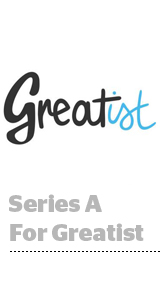 Health and wellness publisher Greatist raised $4.5 million in Series A funding Tuesday.
Health and wellness publisher Greatist raised $4.5 million in Series A funding Tuesday.
The five-year-old publisher turned a profit last year for the first time, and it’s seeking more funds to create custom, high-touch programs with Kind, FitBit and other advertisers.
CEO Derek Flanzraich wants Greatist to become a top player in the health and wellness space. Its editorial twist is low-output, high-quality, such as citing medical journals in articles about health.
With that approach, it’s grown 250% year over year, with a traffic mix that’s unusual for an up-and-coming digital publisher. Less than 25% of traffic comes from social and more than half from search, which Flanzraich said was an unanticipated result from its focus on high-quality articles in a field with little competition.
The investors betting on Greatist include the Floodgate Fund, an early investor in Refinery29, as well as several names in the media business: Strauss Zelnick of ZelnickMedia, David Bach of FinishRich, Andy Russell of DailyCandy, Thrillist and PureWow, John Gardner of LearnVest and David Pecker of AMI.
The funding also comes during a period of hot investment in digital publishers, as evidenced by the acquisitions and funding rounds in 2015.
Greatist will use its funds to add to its staff of 26, including on the advertising side, to help design more custom programs such as original content and events, Flanzraich said.
The custom content approach has been a popular strategy among digital publishing startups that recognize the decline of the banners-and-boxes business. BuzzFeed’s custom-only program is the most notable bet on custom content. PureWow and LittleThings have also focused on custom content as they start their direct sales businesses.
Direct buys for Greatist have mostly included display ads as a value-add, Flanzraich said, a sign of changing times.
With 4.4 million uniques in November according to comScore and 2 million subscribers to its email newsletter, Greatist is on the small side – and it still hears requests from brands and agencies wanting more scale than it can provide.
While Flanzraich hopes continued growth will help it reach some of these advertisers, he’s also hoping advertisers will change the way they think about scale. Smaller publishers with focused audiences can yield more engagement.
“The quality of the size matters,” Flanzraich said, “and I think that will be a big shift in the industry.”












